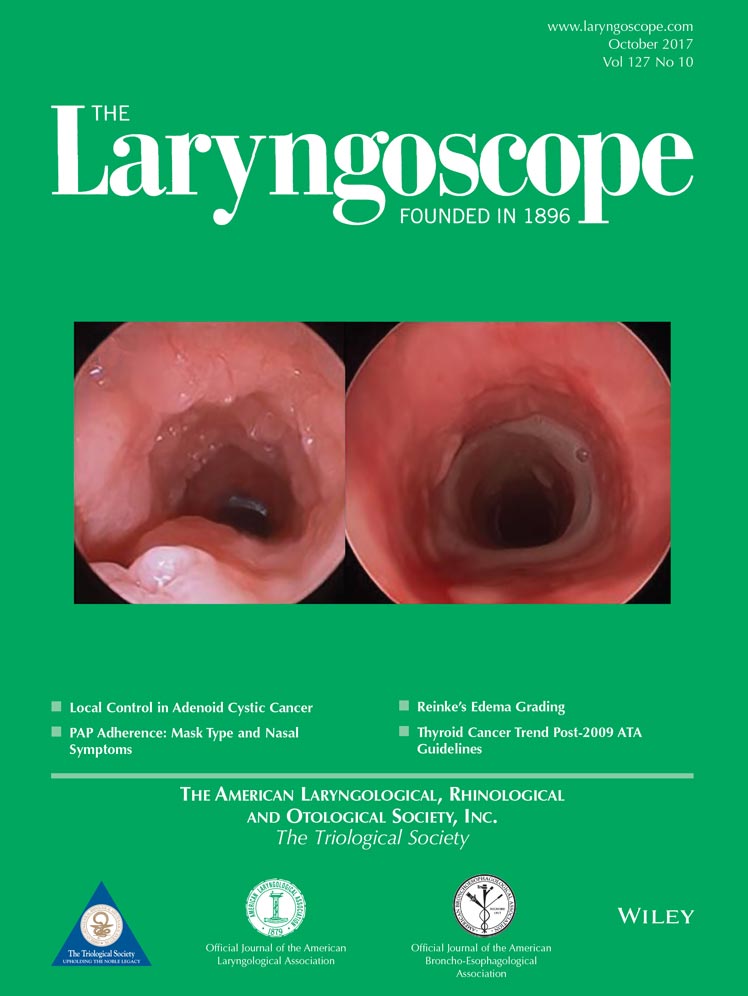In vivo measurement of vocal fold surface resistance
This work was performed at the Department of Otolaryngology, Vanderbilt University Medical Center, Nashville, Tennessee, U.S.A.
Presented as part of a poster at the American Broncho-Esophagological Association Annual Meeting at COSM, San Diego, California, U.S.A., April 26–27, 2017.
This work was funded by grant R01 DC 015405 from theNational Institutes of Health (NIH), National Institute on Deafness and Other Communication Disorders. Transmission electron microscopy was performed through the Vanderbilt University Medical Center Cell Imaging Shared Resource, which is supported by the NIH under award numbers CA68485, DK20593, DK58404, DK59637, and EY08126.
The authors have no other funding, financial relationships, or conflicts of interest to disclose.
Abstract
Objectives/Hypothesis
A custom-designed probe was developed to measure vocal fold surface resistance in vivo. The purpose of this study was to demonstrate proof of concept of using vocal fold surface resistance as a proxy of functional tissue integrity after acute phonotrauma using an animal model.
Study Design
Prospective animal study.
Methods
New Zealand White breeder rabbits received 120 minutes of airflow without vocal fold approximation (control) or 120 minutes of raised intensity phonation (experimental). The probe was inserted via laryngoscope and placed on the left vocal fold under endoscopic visualization. Vocal fold surface resistance of the middle one-third of the vocal fold was measured after 0 (baseline), 60, and 120 minutes of phonation. After the phonation procedure, the larynx was harvested and prepared for transmission electron microscopy.
Results
In the control group, vocal fold surface resistance values remained stable across time points. In the experimental group, surface resistance (X% ± Y% relative to baseline) was significantly decreased after 120 minutes of raised intensity phonation. This was associated with structural changes using transmission electron microscopy, which revealed damage to the vocal fold epithelium after phonotrauma, including disruption of the epithelium and basement membrane, dilated paracellular spaces, and alterations to epithelial microprojections. In contrast, control vocal fold specimens showed well-preserved stratified squamous epithelia.
Conclusions
These data demonstrate the feasibility of measuring vocal fold surface resistance in vivo as a means of evaluating functional vocal fold epithelial barrier integrity. Device prototypes are in development for additional testing, validation, and for clinical applications in laryngology.
Level of Evidence
NA Laryngoscope, 127:E364–E370, 2017




